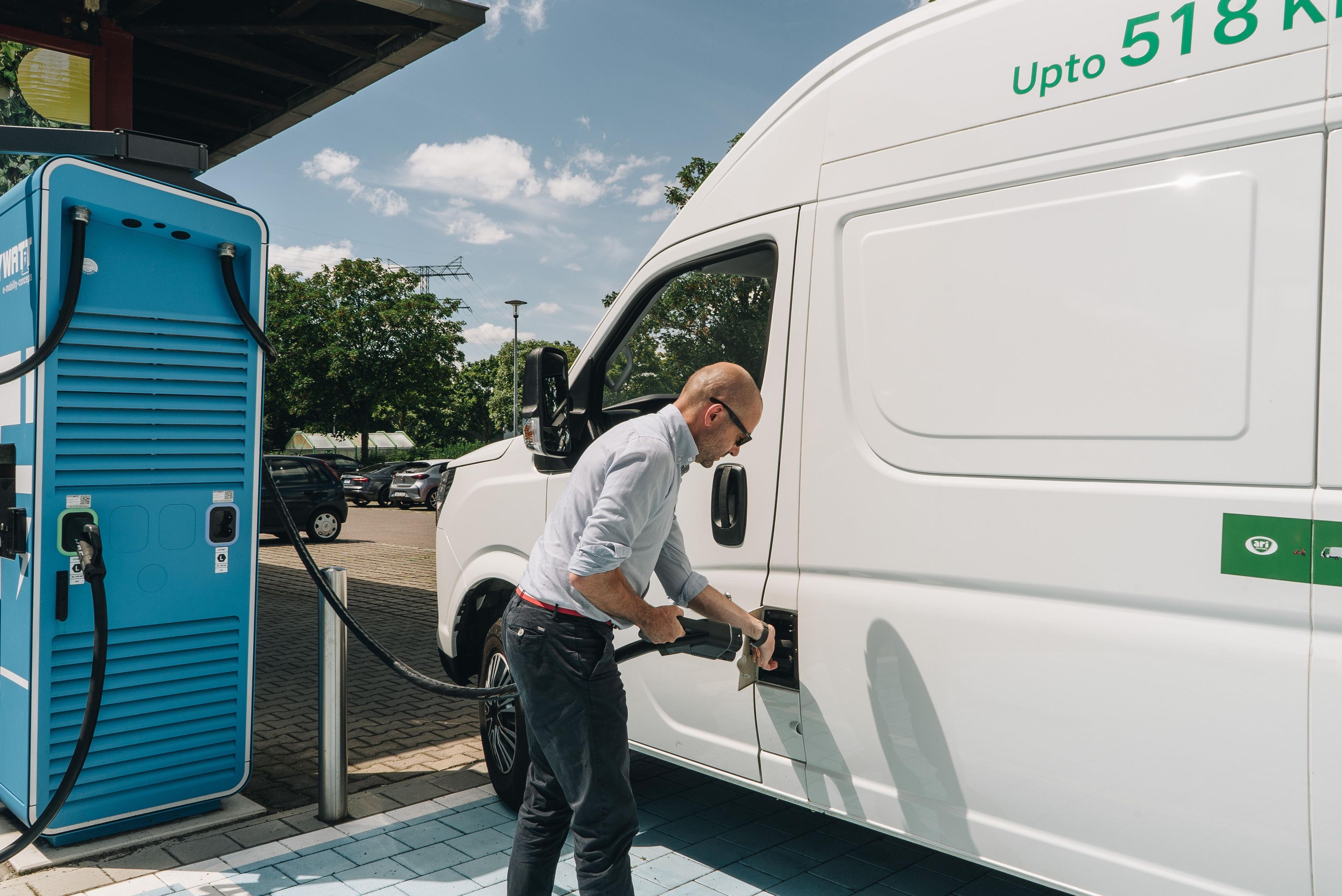March 10, 2025
Fast charging for electric cars: everything you need to know
Electric vehicles are on the rise, and with them the interest in various charging options is also growing. Fast charging in particular offers a tempting opportunity to significantly reduce the charging time of cars. But what exactly does fast charging mean? What are the advantages and disadvantages, and how does it work with ARI Motors models?
Fast charging explained briefly: AC and DC charging
When charging electric vehicles, a basic distinction is made between alternating current (AC) and direct current (DC).
- AC charging (alternating current): This is the common charging method at wallboxes or normal household sockets. It is comparatively slow, as the vehicle first has to convert the current into direct current before it flows into the battery.
- DC charging (direct current): When fast charging with direct current, there is no conversion, so the electricity is fed directly into the battery. This enables significantly shorter charging times.
Battery durability: Why slow charging is often better
Even though fast charging is practical, we generally recommend slower AC charging whenever possible. The reason lies in the battery's service life:
-
High charging speeds generate more heat and subject the battery to greater stress.
-
Slow charging protects the cell chemistry and helps to extend the service life of the battery.
Advantages and disadvantages of fast charging
Advantages:
-
Significantly shorter charging times - ideal for on the go
-
Practical for longer journeys or when quick recharging is required
Disadvantages:
-
Can shorten battery life in the long term
-
Fast charging stations are often more expensive than normal AC charging
-
Not all vehicles are designed for fast charging
Fast charging at ARI Motors: Which models are prepared?
At ARI Motors, some models are already equipped with fast charging options at the factory:
-
ARI 1710 and ARI Bruni offer a fast charging function ex works and can therefore be charged at corresponding DC charging stations.
-
An optional CCS fast-charging adapter is available for the ARI 901, which enables the vehicle to be charged with direct current and thus significantly shortens charging times.
Cost factor: fast charging vs. normal charging
While slow charging at a normal household socket or AC wallbox is cheaper, fast charging often incurs higher charges. Public fast charging stations generally charge higher prices per kWh, as the infrastructure is more expensive. It is therefore particularly worthwhile for short-distance vehicles to charge slowly overnight.
Conclusion: Does fast charging make sense?
For many ARI Motors vehicles designed for short journeys and urban use, normal overnight AC charging is perfectly adequate. However, if fast recharging is required, models such as the ARI 1710 and ARI Bruni already offer the necessary technology, while a fast charging option is available as an option for the ARI 901.
Ultimately, the choice between fast charging and normal charging depends on individual usage behavior. If you want to conserve your battery in the long term, slow charging is the preferred option - ideal for city traffic and short daily trips.
